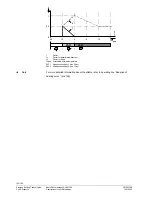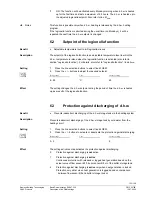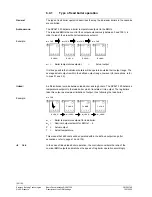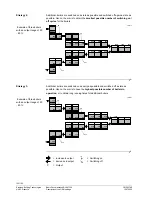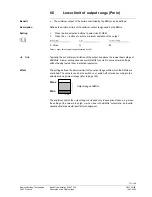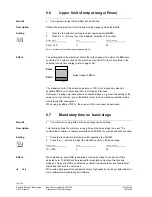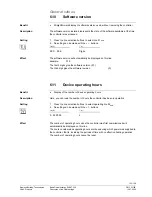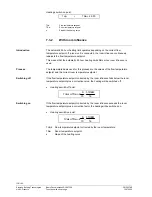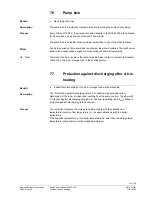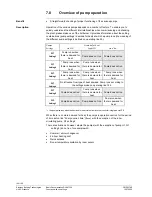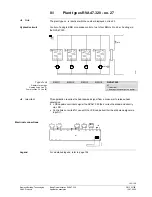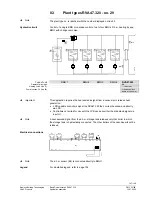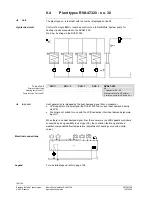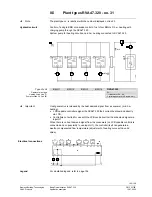
136/166
Siemens Building Technologies
Basic Documentation RVA47.320
CE1P2379E
HVAC Products
Functions with no settings
15.07.2002
7
Functions with no settings
The functions described below require no settings. They are performed automatically
but have an impact on the plant.
For the rectification of faults, planning and plant maintenance, it may therefore be very
advantageous to know about their impact on plant operation.
7.1 Chimney
sweep
•
Produces the operational status required for flue gas measurements.
No chimney sweep function can be triggered on the controller itself. the chimney sweep
function is activated directly on the respective BMU.
As soon as the chimney sweep function is triggered on one of the BMUs of the
cascade, the BMU transmits the signal to the controller, which shuts down all other
BMUs. The controller allows the boiler temperature to rise to a level of 64 °C, which is
required to make flue gas measurements, then maintaining that temperature level by
enforcing heat consumption of both the heating circuits and d.h.w.
This action is independent of whether a lead or lag boiler is involved.
By deactivating the chimney sweep function on the BMU, or on completion of a period
of time to be adjusted on the BMU, the controller returns to its initial operational status.
For information about the activation of the chimney sweep function and other
information, refer to the technical documentation of the type of BMU used.
7.2
Generating the boiler temperature setpoint
•
Demand-dependent control of the burner
The various heating circuits require different flow temperature setpoints depending on
the demand for heat. However, since boiler temperature control can consider only one
setpoint, a selection is made.
Generally, the demand for the highest setpoint required by a consumer (e.g. by a
heating circuit) generates the current boiler temperature setpoint.
The setpoint requirements considered stem from both controller-internal setpoints
(heating circuit or input H1) and setpoints transmitted via LPB.
Auxiliary functions, such as setpoint boosts and the like, are included in the setpoints
actually demanded at the time.
A demand for d.h.w. has priority over all other setpoint requirements, which means that
the required d.h.w. setpoint will be maintained, even if it is lower than that called for by
a heating circuit.
The boiler temperature is maintained at the highest setpoint currently demanded -
unless d.h.w. is required.
Introduction
Benefit
Description
Effect
Note
Benefit
Description
Process
Exception
Effect

